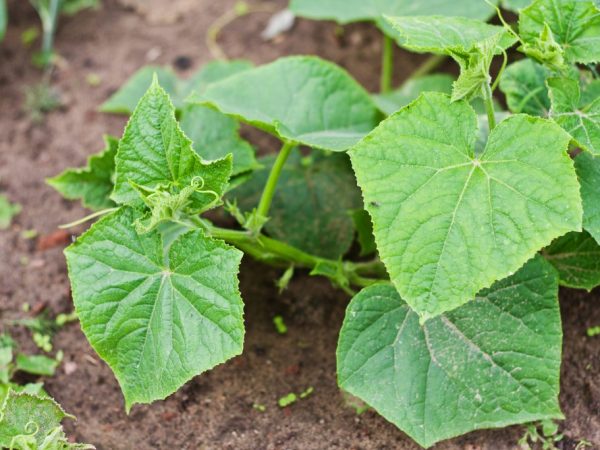Characteristics of hybrid cucumbers Picnic
The Picnic cucumber variety belongs to the F1 hybrids, which gives it many advantages that have attracted the attention of gardeners.

Characteristics of hybrid cucumbers Picnic
Variety characteristic
The picnic is a parthenocarpic hybrid. It is resistant to diseases and pests, has high yield rates.
According to the description, the length of the bush is more than 1 m. The bush begins to bear fruit 44 days after the first shoots. The dominant type of flowering is female, the degree of branching is low. The main shoot can grow up to 9 ovaries.
The fruit reaches 11 cm in length and weighs up to 95 g. The fruit is covered with a thin skin with small tubercles and thorns on it. The flesh of the cucumber is juicy, crunchy, sweet and delicious. The fruits are stored for a long time without losing their presentation.
Care
Leaving is the most crucial stage in the cultivation of cucumbers.
Before landing
The hybrid is grown in open and closed grounds, planting begins in the spring.
Before planting, the seeds are soaked in a solution of mineral substances. They should not be placed in the ground deeper than 2 cm. After deepening, the soil is watered to moisten. The best temperature for growing the Picnic variety is 24-26⁰C.
After landing
After planting, it remains to observe the growth of the plant and maintain it.
When the bush reaches 1 m in length, it is tied to a trellis for added stability. The site must always be cleaned: no weeds and dirt.
Cucumbers love water and should be watered daily. With the appearance of the first shoots, feeding is included.
It is best to use mineral fertilizers. The dosage of mineral fertilizers is 1-2 tbsp. l. fertilizers per 1 liter of water. They also make sure that the plants are not infected with parasites and diseases. Careful care results in many tasty and healthy fruits.
Pests and diseases

It's easy to get rid of pests
Beginners and experienced gardeners are afraid of meeting pests and diseases on their site. F1 hybrids most often get sick due to the carelessness of the gardener.
Pests
In the early stages of the defeat of parasites, it is easy to remove:
- The whitefly is a small winged insect that feeds on plant sap, which causes leaves to rot. A solution of garlic and water (150 garlic per 1 liter of water) helps against whitefly. The whole bush must be sprayed with the solution.
- Aphids are small green insects. The pest drinks juice from the leaves. As a result, aphids rob the bushes of healthy leaves and cause suppuration. Aphids should be sprayed with a solution of wood ash, soap and water (2.5 liters of water per 50 g of wood ash and 20 g of soap).
- Spider mites are insects no more than 1 mm in length, velvet color. The appearance of a spider mite is characteristic of a cobweb left on the leaves. The mites drink the sap of the plant. To combat them, prepare a soap solution (1 tbsp. L. Soap per 1 liter of water) and spray the plant with it.
- Slug is a mollusc with a brown or gray body. It crawls, leaving behind mucus. The slugs feed on the leaves of the bushes and spoil the fruit. The easiest way to deal with them is manual. You just need to inspect the bushes for these pests and collect them.It is also recommended to scatter sand paths between the bushes, which serves as a trap for slugs, as they get stuck in the sand.
Traditional methods of pest control have been proposed, but the most effective and at the same time expensive option is branded insecticides.
Diseases
Illness arises from mistakes made during care. The picnic resists any disease, but it needs help.
- Powdery mildew. All leaves of the bush are covered with spots of white-yellow color. Powdery mildew causes leaf wilting and cessation of fruiting. For treatment, a solution of fungicides and water is used (10 g of fungicides per 5 liters of water), but if the disease has gone too far, the plant is destroyed.
- Cladosporium. Leaves and fruits are covered with brown rotten spots. To cure the bush, it is not watered for 4 days and treated with foundation (10 g of foundation per 0.5 l of water).
- White rot. Sticky white growths appear all over the bush. For treatment, a solution of urea, water, zinc sulfate and copper sulfate is used (10 g of copper sulfate, urea, zinc sulfate per 2 liters of water).
- Downy mildew. Yellow spots appear on the leaves. The bush dries up, the leaves wither. For the bush, stop watering for 5 days and treat it with a solution of polycarbacin (10 g of polycarbacin per 4 l of water).
It is recommended to inspect the plant to detect the first signs of any disease. The neglected bushes are destroyed, as they pose a danger to healthy plants.
Conclusion
Picnic is a variety endowed with many virtues. Cucumber is versatile in preparation and has excellent taste.


